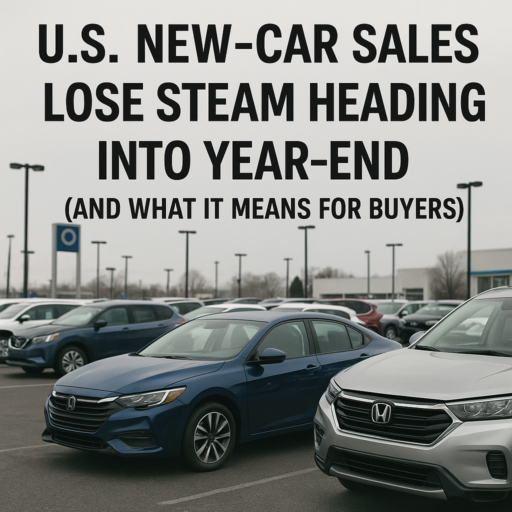In an era where economic uncertainties loom large, the American automotive landscape is undergoing a significant transformation. Amidst rising inflation and soaring interest rates, the once insatiable appetite for luxury and feature-rich vehicles is giving way to a more pragmatic desire: the demand for affordable, practical transportation. This article delves into this emerging trend, exploring how economic pressures are reshaping consumer preferences and challenging the product strategies of U.S. automakers.

How the U.S. is Embracing More Affordable Vehicles (PDF)
The Shift in Consumer Demand
In the bustling streets of American cities, amidst the gleaming towers and busy sidewalks, a quiet revolution is taking place in the automotive world. Shoppers, squeezed by the unrelenting grip of inflation and escalating interest rates for car loans, are turning their gazes away from the luxurious, feature-packed vehicles that once dominated the roads. Instead, they’re yearning for simpler, more affordable modes of transportation – a demand that has been largely unmet by major U.S. automakers.
This shift in consumer preference isn’t just a fleeting trend. It’s a response to the changing economic landscape. Cars under $50,000 are being snatched up at an unprecedented rate, leaving their pricier counterparts collecting dust on dealer lots. Data from Edmunds highlights this dramatic shift: In August, it took dealers an average of 26 days to sell a sub-$50,000 car, compared to 40 days for more expensive models. And this gap is only widening, signaling a stark change in buyer priorities.
The Impact of Economic Changes
The change can be traced back to March 2022, when the Federal Reserve’s anti-inflation interest rate hikes caused car loan rates to soar. By September, the average new car loan rate had jumped to 9.61%, a steep rise from just over 5% at the beginning of 2022, according to Cox Automotive. This hike has squeezed household budgets already strained by inflation and the end of pandemic-era financial support from the government. As a result, half of all households now can only afford a monthly car payment of $400 or less, a far cry from the average $770 monthly payment for a new car.
Ivan Drury, head of insights for Edmunds, notes that consumers who previously indulged in fully configured SUVs and pickups with luxury features are now reaching their financial limits due to higher interest rates. The demand for cheap, straightforward transportation is a reversal from recent years when low pandemic-era interest rates kept car loans affordable, leading customers to flock to high-end SUVs and trucks costing $60,000 or more.
The Decline of Affordable Vehicles
However, U.S. automakers seem to have missed the memo. In their pursuit of higher profits and catering to previous consumer trends, they have largely ceased production of the very kind of affordable cars now in demand. The Big Three Detroit automakers’ lineups are now nearly devoid of the small sedans and hatchbacks that were once staples of American roads.
The disappearance of affordable cars is striking. As of December 2022, only 4% of new cars sold for less than $25,000, a steep decline from 17% in 2017, as reported by Kelly Blue Book. The number of models in this price range dwindled from 36 to just 10 over this period. By February 2023, there were a mere three models selling for under $20,000, and notably, none of them were made in the U.S.
Conclusion
The landscape of the American car market today presents a compelling paradox: a chasm exists between what U.S. automakers are producing and what the modern consumer urgently requires. The critical challenge now is not just about affordability, but about a broader reevaluation of the automotive industry’s direction.
How will U.S. car manufacturers recalibrate their strategies to resonate with the budget-conscious American family?
The path forward demands more than merely reviving economical models; it calls for a visionary approach to automotive design that harmoniously blends fiscal sensibility with technological advancement. This balancing act is crucial as the industry steers towards a future where cutting-edge vehicles are not just marvels of innovation but also accessible treasures for the everyday American.





